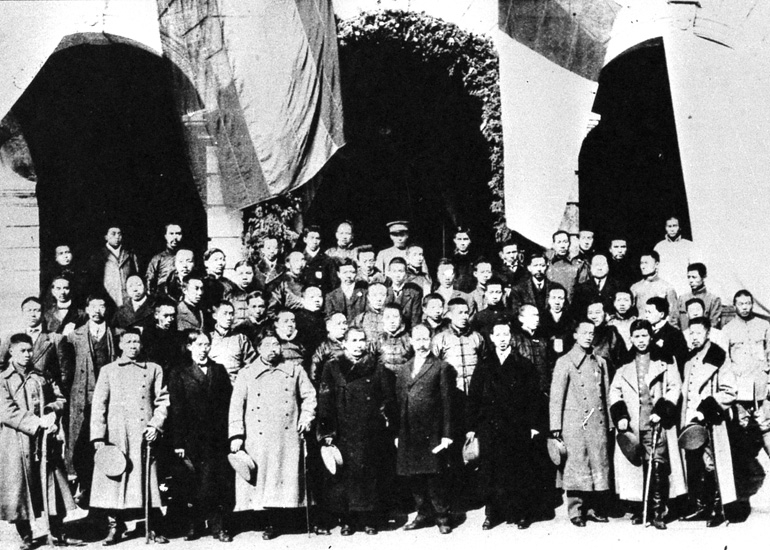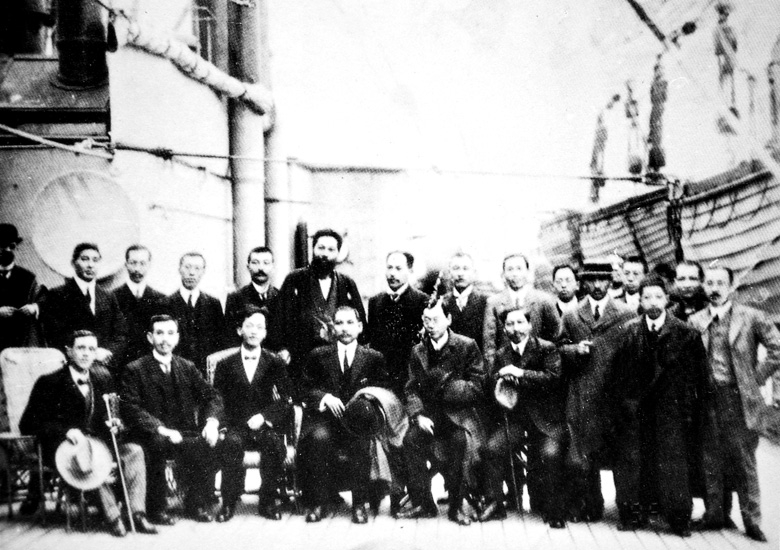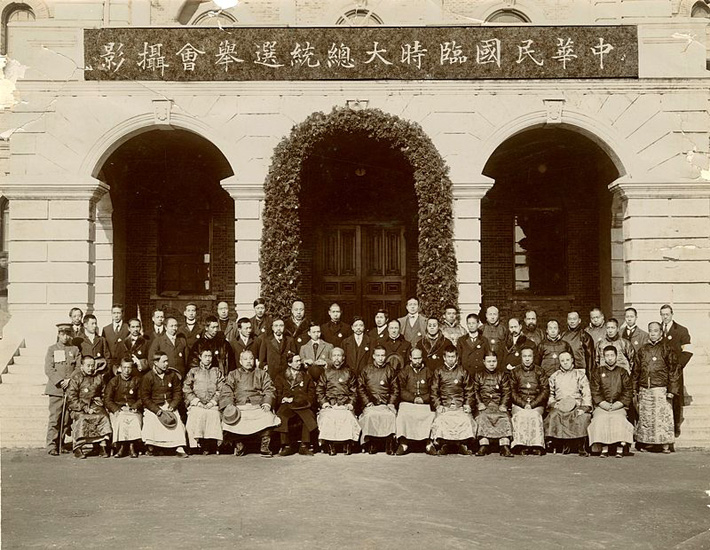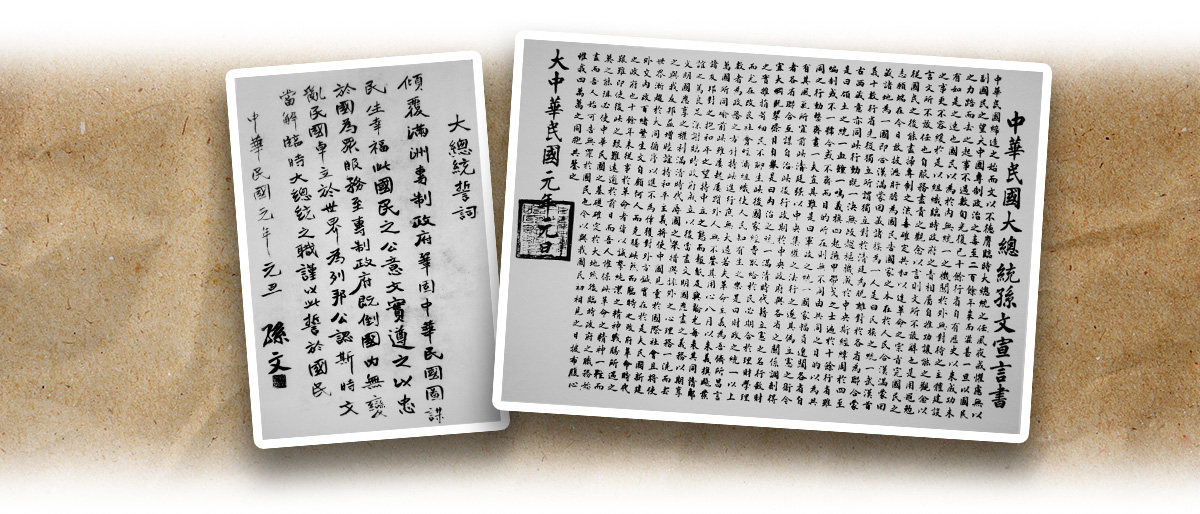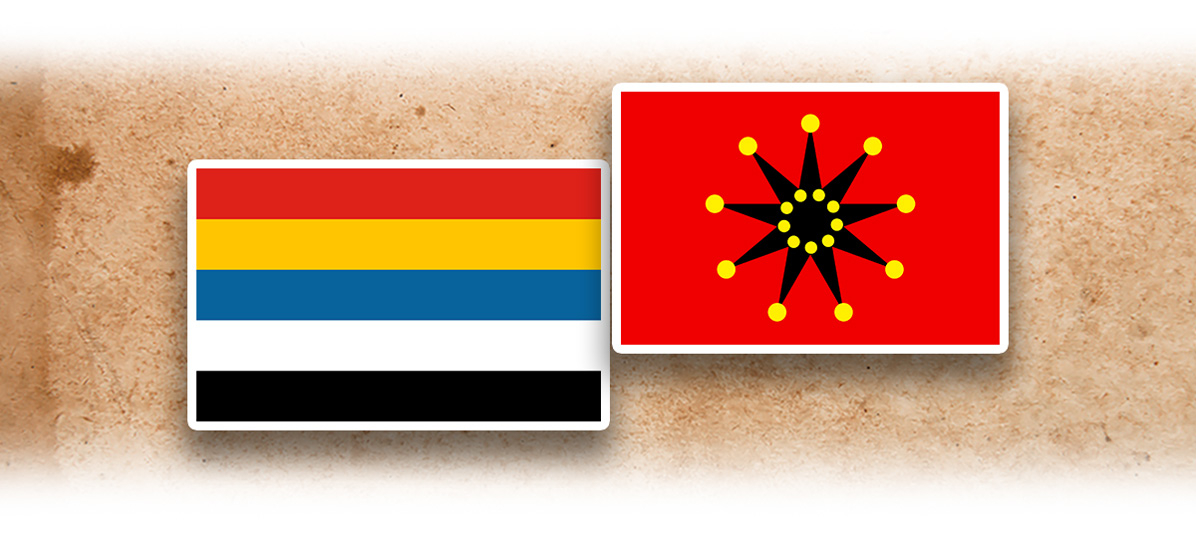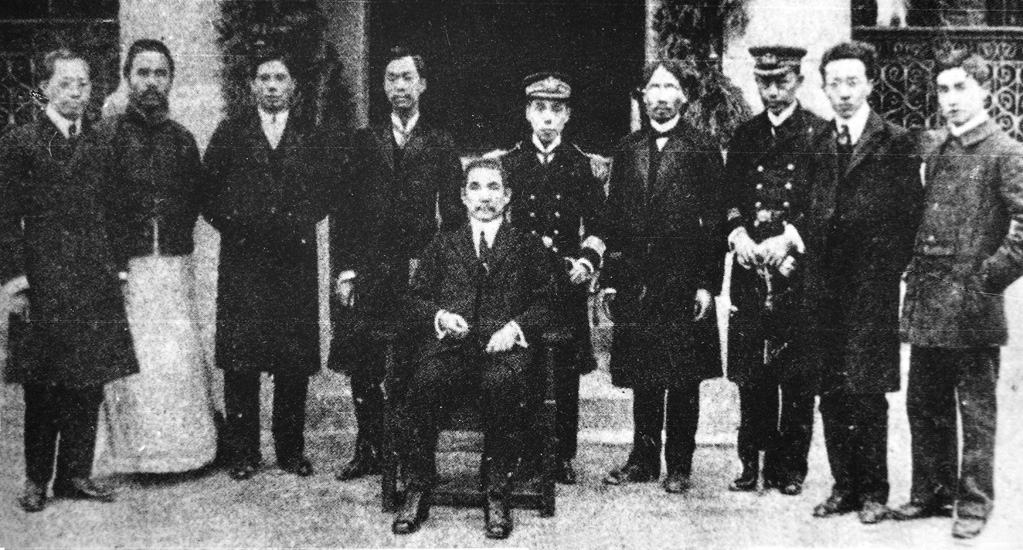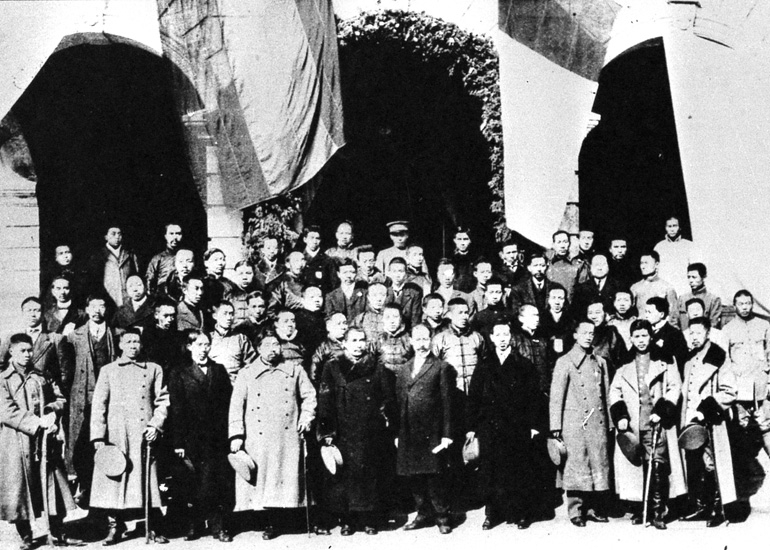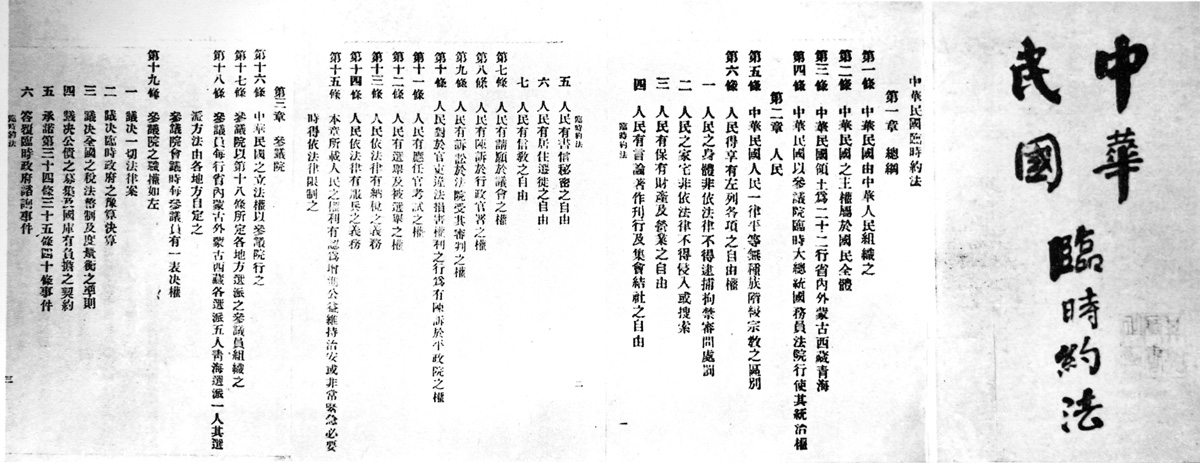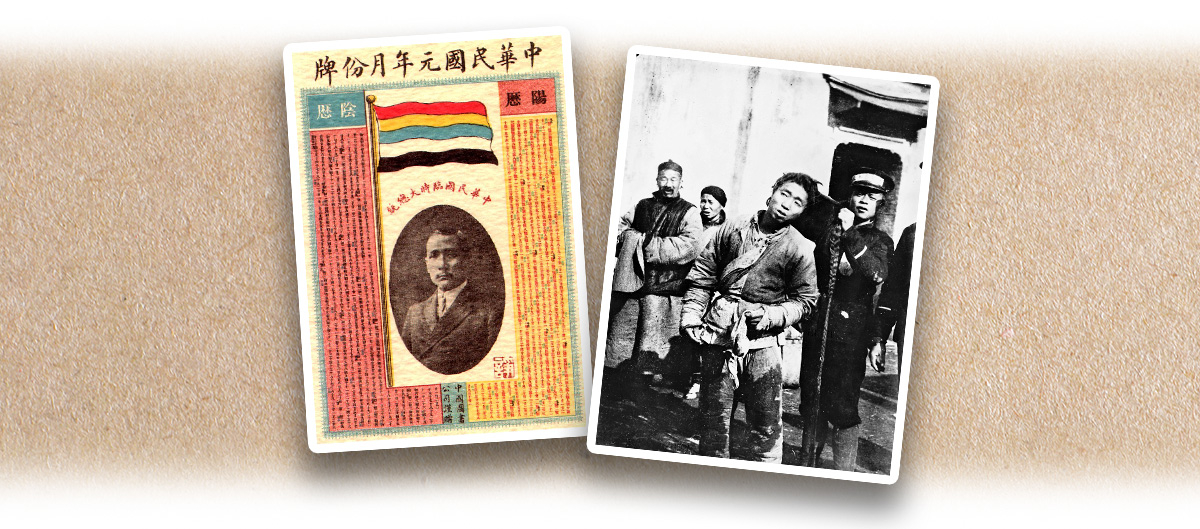In just two months after the Wuchang Uprising (武昌起義) on 10 October 1911, more than a dozen provinces in China seceded from the Qing regime. Although the emperor had yet to abdicate, his rule existed in name only.
On 2 December, the revolutionary army conquered Nanjing (南京). On 29 December, Sun Yat-sen (孫中山), who had just returned to Shanghai (上海) from overseas, was elected as the Provisional President of the Republic of China at a meeting convened in Nanjing by delegates from 17 independent provinces.
In the morning of 1 January 1912, Sun left Shanghai for Nanjing and arrived around 5pm. At 11pm that night, the provisional presidential inauguration ceremony was held. Sun was sworn in and proclaimed formally the founding of the Republic of China. He announced the adoption of the Republic of China calendar (which uses 1912, the founding year, as the first year) for numbering years, while the numbering of months and days and leap year rules would follow the Gregorian calendar (solar calendar). Shortly afterwards, Li Yuanhong (黎元洪) was named the Provisional Vice-President of the Nanjing Provisional Government. The Cabinet nomination submitted by Sun was approved and senators were selected from the independent provinces to form a provisional senate as the legislature.
In the first inaugural address of the Republic of China, Sun enunciated his commitment to “remove the poison of authoritarianism, ensure the Republic to meet the principles of the revolution, and fulfil the wishes of our people”. It marked the end of the Chinese monarchy and the beginning of the republican age.
|
|
What new measures did the Republic of China promulgate besides proclaiming its founding? |
|
|
See answer below. |
The Wuchang Uprising succeeded on 10 October 1911 were well-received by most parts of China. It culminated to what was later known as the Xinhai Revolution (辛亥革命) or 1911 Revolution. Upon hearing of the uprising’s success, Sun Yat-sen returned to China from overseas. He took a photo with a group of welcomers on the ship when it passed by Hong Kong on 21 December 1911. He reached Shanghai on 25 December.
On 29 December 1911, delegates from the 17 independent provinces held the Provisional Presidential Election of the Republic of China in Nanjing and elected Sun Yat-sen as the provisional president.
On 1 January 1912, people from all sectors of Shanghai society sent Sun Yat-sen (right figure in the centre) off to Nanjing to assume office as the provisional president at the train station.
In the evening of 1 January 1912, the inauguration ceremony of the Provisional President of the Republic of China was held at the Presidential Palace in Nanjing. The founding of the Republic of China was officially proclaimed. On the left: the official portrait of Sun Yat-sen as the Provisional President of the Republic of China; on the right: the photo of Sun (right) and Li Yuanhong, the vice-president.
On the left: Sun Yat-sen’s presidential oath; on the right: after taking his oath of office, Sun released the Declaration of Provisional President Sun Wen (《中華民國大總統孫文宣言書》, Sun Wen being Sun Yat-sen’s other name), proposing the country’s approach to ethnicity, territory, military administration, internal governance, finance and so forth.
In a special resolution passed on 10 January 1912, the provisional senate adopted the “Five Races Under One Union Flag” (五族共和旗, or the Five-Coloured Flag, as it was characterised by five colours - red, yellow, blue, white, and black) as the national flag, while the “18-Star Flag” (on the right) used by the Hubei (湖北) Military Government during the Xinhai Revolution was adopted as the Republic’s army flag.
After Sun Yat-sen was sworn in as the provisional president, a provisional government was also established. Pictured is a photo of Sun with the Cabinet of the provisional government taken on 5 February 1912.
On 28 January 1912, the provisional senate was formed in Nanjing. Pictured is a group photo of Sun Yat-sen with the Presidential Palace’s staff and senators at the main entrance to the provisional senate building. The fourth and the fifth figures from the left in the front row are Huang Xing (黃興) and Sun respectively.
On 11 March 1912, the Provisional Constitution of the Republic of China (《中華民國臨時約法》) with constitutional status was promulgated.
On the left: a calendar titled “the founding year of the Republic of China (中華民國元年); on the right: on 31 December 1911, the day before Sun Yat-sen’s inauguration as provisional president, Nanjing military police began to cut off the queues of passers-by on the streets. Besides the political transition from a monarchy to a republic, initiatives including the adoption of the Gregorian calendar and the removal of queues showed the Republic’s resolve to innovate social customs and culture.
|
|
What new measures did the Republic of China promulgate besides proclaiming its founding? |
|
|
Upon the birth of the Republic, Sun Yat-sen and the other founding members emulated the American political system to establish a congress with chambers and promulgate a constitution. They also took measures to eradicate evil practices including cutting queues; abolishing foot-binding, torturing, and prostrating; introducing new national costumes (such as the Zhongshan suit﹝中山裝﹞); emphasisng human rights. Sun also intended to apply the Three Principles of the People (三民主義), realise the “Union of the Five Races”, and distribute land equally among the people. Regrettably, as he lost power too soon and was impeded by the imperialist powers and the warlords, his lifelong aspirations were never fulfilled. |
Sources of most photos used in this feature piece: Fotoe and misc. photo sources.




